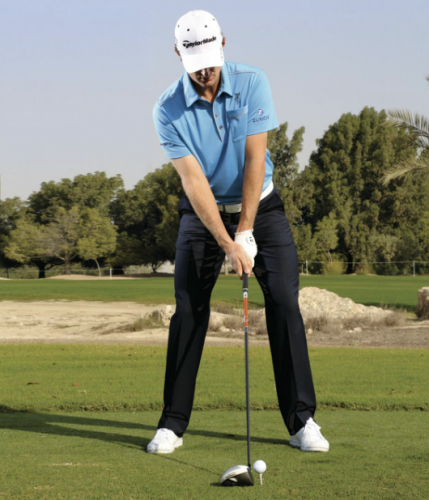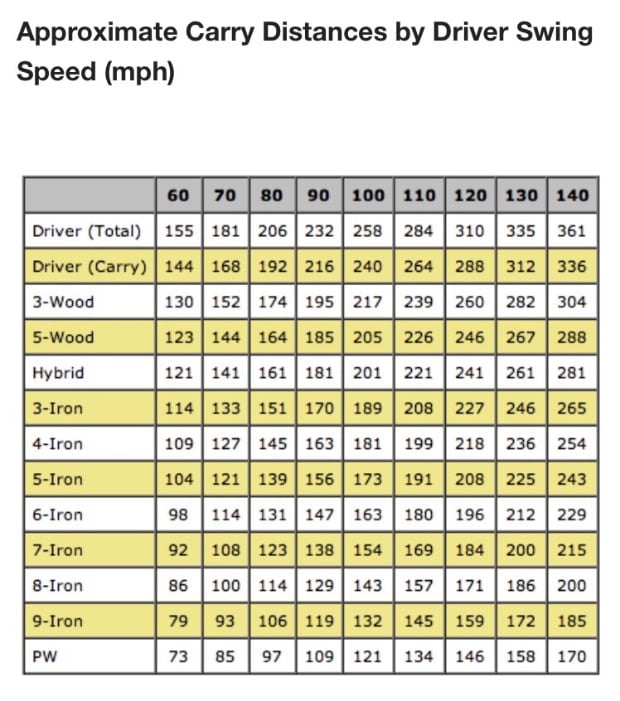
Many studies have been done on the modern and traditional golf swing. Vaughn (1979), a three-dimensional swing mechanics researcher, and Milne and Davis (1992), a two-link planar structure with a flexible lower linking to study club trajectories. These studies concentrate on the fundamental principles behind golf swing mechanics. These studies are also useful in understanding the influence of hip rotation and grip pressure on power generation.
Lessons from Justin Rose's Golf Swing
We saw a PGA Tour event held in Georgia this fall. Justin Rose did well. He delivered the clubhead to his ball with a textbook delivery. You may be curious about Justin Rose's recreational golf swing. He explains the mechanics of his swing and shares 7 tips for improving your game. Below are some of the key elements of his golf swing. Read on to learn more.

Get the club started. His downswing, while short, is not long and he does not slide. His upper body also supports the ball. His lead wrist flattens during impact. This promotes the squareness and functional alignment for the clubface. Rose releases his club unit with the left hand after impact. This is a fundamental mechanic every golfer can learn to improve their game.
Principles of modern golf swing mechanics
Rory McIlroy's biomechanical analysis of the backswing shows the importance rotation during the backswing. Rotation is not only important for producing speed in the backswing, but it also creates torque that transfers to your clubhead at impact. The mechanics and motion of the backswing depend on a variety of factors including the hips and lower body as well as the torso range of motion.
Engineer at the University of Surrey Professor Robin S. Sharp tried to unravel the secrets of long drives. He discovered that the key to a perfect swing wasn't in the wrists. It was more about the shoulders and core. After analysing the swings of legendary golfers, he used computer models to determine the precise angles of these three pivotal points of rotation. This information is vital for understanding the mechanics of the golf swing and creating a customized training program.
Influence hip rotation on power generation
Studies have shown that running and cycling depend on the role of the GM. The hip is a primary contributor to PO, but other joints must be studied to determine the role of GM in power production. The GM has the greatest activation increase during the last stage, when power production must still be maintained. The GM's secondary role is as a hip external rotator.

External rotators have the ability to generate external rotation torque. They have a nearly horizontal line of force that intersects with the joint's longitudinal direction of rotation. These forces can compress the hip joints and provide mechanical stability to its acetabulofemoral joint. Primary rotators, however, are the gluteus maxus and its posterior fibres. Secondary rotators include: the obturator externalus and long head of biceps fiemoris.
Power production is affected by grip pressure
The impact of grip pressure on power production was tested using a within-subject factorial design, including three different grip applications: power grip, pinch grip, and no active grasping. Pilot testing was performed to determine the level of wrist motion in each of these grip styles. In this study, wrist movement was defined as angular deviation in one or both of the following wrist planes. Participants performed two compound patterns in each grip application: one mimicked dart throwing motion and the other was similar to a powergrip.
When active gripping is used, wrist tunnel pressures rise. Pinch grip pressures overall were 18% greater than in no-grip situations. Pinch grip data also showed two distinct trends. CTP increased as resistance was increased. The second trend was wrist extension movements increasing at higher resistance levels. Despite these findings, the pressures were not statistically significant when applied under the no-resistance state.
FAQ
Do I need any special skills to play golf?
No. All you need to do is bring a pair of walking boots, a towel and a few clubs.
What's the difference between driving ranges and putting greens?
Players can practice hitting the ball from 50 to 300 yards on a driving range. To practice putting, players use putting greens.
What equipment should I bring when playing golf?
Golfers should wear appropriate clothing for the weather. Long trousers are recommended for golfers, as well as a shirt and shoes that have good grip. Player should protect their eyes with sunscreen and sunglasses while playing outdoors.
To help you wipe sweat from your face and body after working out, it's a good idea for you to bring a towel. It is a good idea to also bring a hat with gloves, a water bottle, snacks, and fruit.
Is golfing dangerous?
While golf isn't considered dangerous, it can cause injuries. You might break your arm swinging a golf club.
However, most injuries result from falling off your golf cart.
What kind clubs should I use
There are many types and styles of clubs. A driver is a heavy-metal club that allows players to hit the ball farther. Other clubs include wedges and woods as well.
Woods are longer clubs made to allow players to play closer to the pin and still be able to reach green. They are typically used for long drives and approaches.
Irons, or shorter clubs, are used to help players hit the pin closer. They are often used for short-distance shots such as putting and chipping.
Wedges are specialized clubs that are used to control the flight path of the ball. They are normally used for shots requiring precise direction.
Putters can be described as small clubs that are used to kick the ball towards the cup. They are used by players to make short putts.
What type of shot do you want to make determines the type of club that you choose. Different shots will suit different clubs.
Drivers can be used to hit the ball farther away than the hole, for instance. Woods are ideal for driving the ball long distances. Irons can be used for quick shots. It is easy to control the ball's flight with a wedge. Putters are great for rolling the ball into a hole.
Statistics
- Professional golfers typically make between 60% and 70% of greens in regulation. (en.wikipedia.org)
- Buying a set of Titleist or Taylor-Made irons for nearly $1,000 is simply not necessary and likely a waste of money. (golficity.com)
- In the United States, women made up 25 percent of golfers in 2021, which was up from 19 percent in 2011, and junior female golfers account for 35 percent or 1.1 million golfers.[50] (en.wikipedia.org)
- In the United States, the number of people who play golf twenty-five times or more per year decreased from 6.9 million in 2000 to 4.6 million in 2005, according to the [51] (en.wikipedia.org)
External Links
How To
How to Get the Perfect Bunker Shot
A bunkershot is a type if golf shot where you aim your ball at a specific spot (the hole) in order to ensure that the ball doesn't bounce off of the surface. This is achieved by taking advantage the green's slope. This will ensure the ball is directed towards the hole in the best possible way.
When playing golf, you want to find the best line to reach your target point. You have to consider several factors such as how much distance away you are from the target, what kind of terrain you're hitting through, whether the ball needs to bounce off the ground or fly straight, and even weather conditions.
It is important to understand the fundamentals of bunker shooting in order for you to achieve perfect results. First, you should determine if you are going uphill or downhill. If you are looking uphill, a drawing board is necessary. You should swing with a fade when you're looking downhill. Next, you'll need to figure out how fast you need to move your body in order to stop the ball from bouncing off the green. This is done by measuring how far the ball is from you and which direction it is going. Finally, you will need to know how big the bunker is you're trying to hit.
Once you've got these things figured out, it's time to start swinging. Swing hard enough to let the ball go past the face of the club head but slow enough to keep it from bouncing off the green, just like you would when making any other shot. Once you have established the correct speed and trajectory for your shot, you can then begin to plan your approach. Slowly approach and touch the ball so that you can see the landing spot. Next, you should take one final look at the ball before you release it. If all goes according plan, you will be able to make a perfect bunker shot.